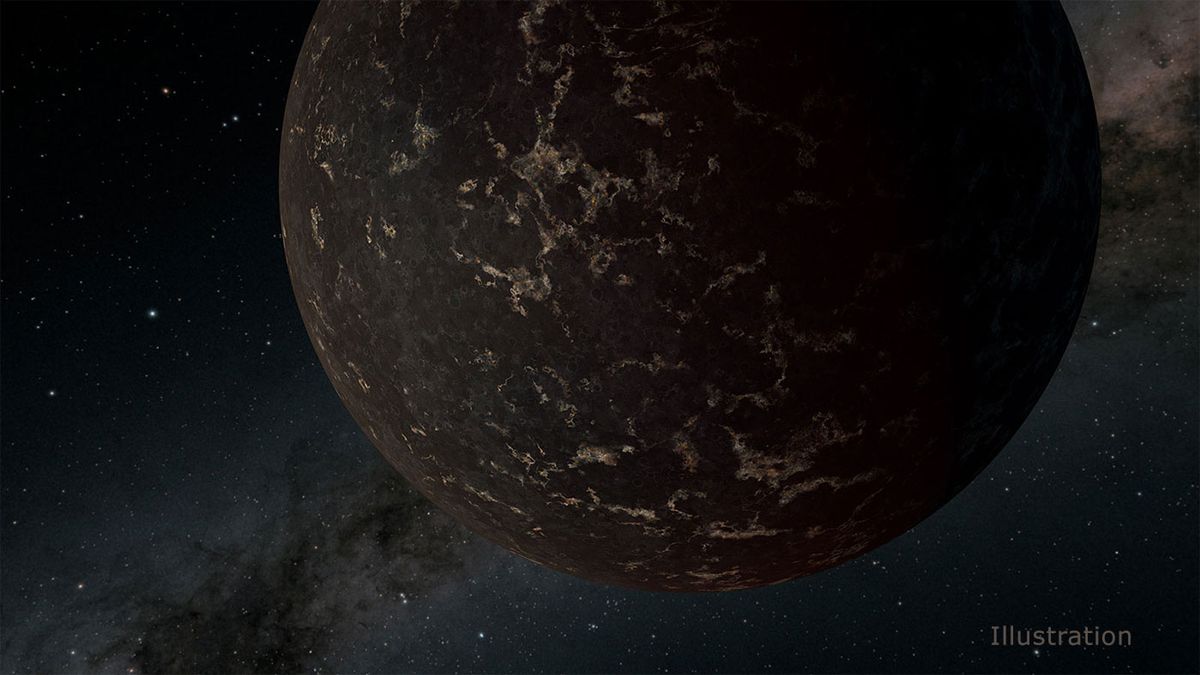
A nearby, rocky exoplanet may be just a plain rock with no atmosphere — supporting a theory that planets orbiting small stars are more susceptible to lacking an atmosphere.
Astronomers using NASA's Spitzer Space Telescope observed the planet, named LHS 3844b, while looking for signs of an atmosphere. Instead, they found indications that the planet is a bare rock. The findings support the theory that planets orbiting smaller stars (around 60% smaller in radius than the sun) lack substantial atmospheres — possibly due to the radiation from their dwarf star, according to the study.
LHS 3844b has a radius that is 1.3 times larger than Earth, and it completes one orbit around its host star in a mere 11 hours.
Related: The Strangest Alien Planets (Gallery)
The study tested for the planet's atmosphere, which is an indication of whether or not it can sustain life, by observing light from its surface over a period of 100 hours. Through the observations, the scientists discovered that one side of the planet is permanently facing its star in what's known as a "tidally locked" orbit. (Earth's moon is also tidally locked, which is why we never see the far side.)
One side of the planet, the "dayside," is a scorching 1,410 degrees Fahrenheit (770 degrees Celsius). If there was a substantial atmosphere present on the planet, then the hot air from one side would generate winds that transfer heat across the planet's surface. But with a lack of atmosphere, there would be no air to transfer the heat around. (The temperature of the planet's "nightside" could not be measured by the Spitzer telescope, as it is an infrared telescope).
"The temperature contrast on this planet is about as big as it can possibly be," Laura Kreidberg, a researcher at the Harvard and Smithsonian Center for Astrophysics in Cambridge, Massachusetts, and lead author of the new study, said in a statement. "That matches beautifully with our model of a bare rock with no atmosphere."
The planet's surface could be covered in the same dark lava rocks called mare that are found on the moon's darker areas, according to the statement.
The rocky exoplanet was first discovered in 2018 by NASA's Transiting Exoplanet Satellite Survey, which found LHS 3844b orbiting around an M dwarf star — the most common type of star in the Milky Way.
The discovery of the exoplanet marks the first time scientists were able to observe an exoplanet orbiting an M dwarf without an atmosphere.
"We've got lots of theories about how planetary atmospheres fare around M dwarfs, but we haven't been able to study them empirically," Kreidberg said. "Now, with LHS 3844b, we have a terrestrial planet outside our solar system where for the first time we can determine observationally that an atmosphere is not present."
Follow Passant Rabie on Twitter @passantrabie. Follow us on Twitter @Spacedotcom and on Facebook.
https://www.space.com/rocky-alien-planet-with-no-atmosphere-discovery.html
2019-08-20 15:47:00Z
CBMiSmh0dHBzOi8vd3d3LnNwYWNlLmNvbS9yb2NreS1hbGllbi1wbGFuZXQtd2l0aC1uby1hdG1vc3BoZXJlLWRpc2NvdmVyeS5odG1s0gEA
Bagikan Berita Ini














0 Response to "This Weird, Rocky Planet Has No Atmosphere - Space.com"
Post a Comment